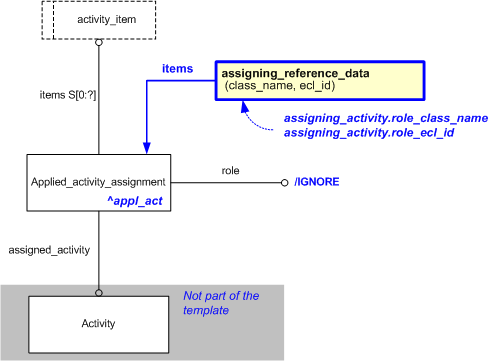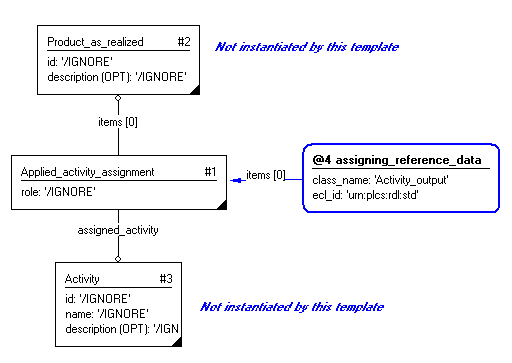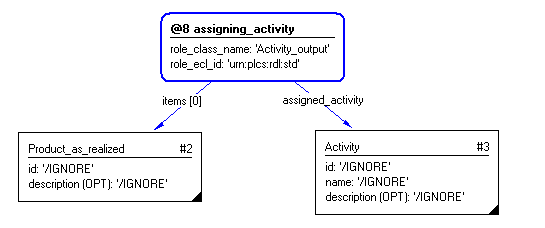| Template:— assigning_activity (asg_act) |
Date: 2008/01/16 14:19:35
Revision: 1.15
|
This section specifies the template assigning_activity.
NOTE
An explanation of a template and the associated instantiation path is
provided in the
Template overview
section.
This template describes how to assign an activity to something in a given role. For example,
a maintenance activity that has been performed on a product is recorded by assigning
an Activity_actual to
a
Product_as_realized.
The EXPRESS-G diagram in
Figure
1
shows the templates and EXPRESS entities that are required
to represent the template
"assigning_activity".
The text highlighted in blue shows the template parameters.
Figure 1 — An EXPRESS-G representation of the Information model for assigning_activity
The graphic for the template to be used in other EXPRESS-G diagrams
is shown in Figure
2
below.
Figure 2 — The graphical representation of assigning_activity template
The following input parameters are defined for this template:
The following classes and their sub-classes can be used:
The identifier of the
External_class_library storing the
definition of the class referenced by the parameter @role_class_name.
The activity to which the items are assigned
The activity, product, individual, task_method, etc that is being assigned to
the activity.
The following reference parameters are defined for this template:
%^target = $assigning_activity.appl_act%
The instantiation path shown below specifies the entities that are to be
instantiated by the template.
The following entities are instantiated with attributes as specified:
The instance diagram in Figure
3
shows an example of the EXPRESS entities and templates that are instantiated by the template:
/assigning_activity(role_class_name='Activity_output', role_ecl_id='urn:plcs:rdl:std', items='#237', assigned_activity='#235')/
(an illustration of the consolidated assigning_activity template is shown in
Figure
4 below.)
Figure 3 — Entities instantiated by assigning_activity template
The instance diagram in
Figure
4
shows the graphic symbol for the template that is to be
used in other instance diagrams. The example template is:
/assigning_activity(role_class_name='Activity_output', role_ecl_id='urn:plcs:rdl:std', items='#237', assigned_activity='#235')/
Figure 4 — Instantiation of assigning_activity template
Characterizations
No common characterizations of the template
assigning_activity
have been identified. However, the ISO 10303-239 EXPRESS model
may enable other assignments to the entities instantiated by the template.




